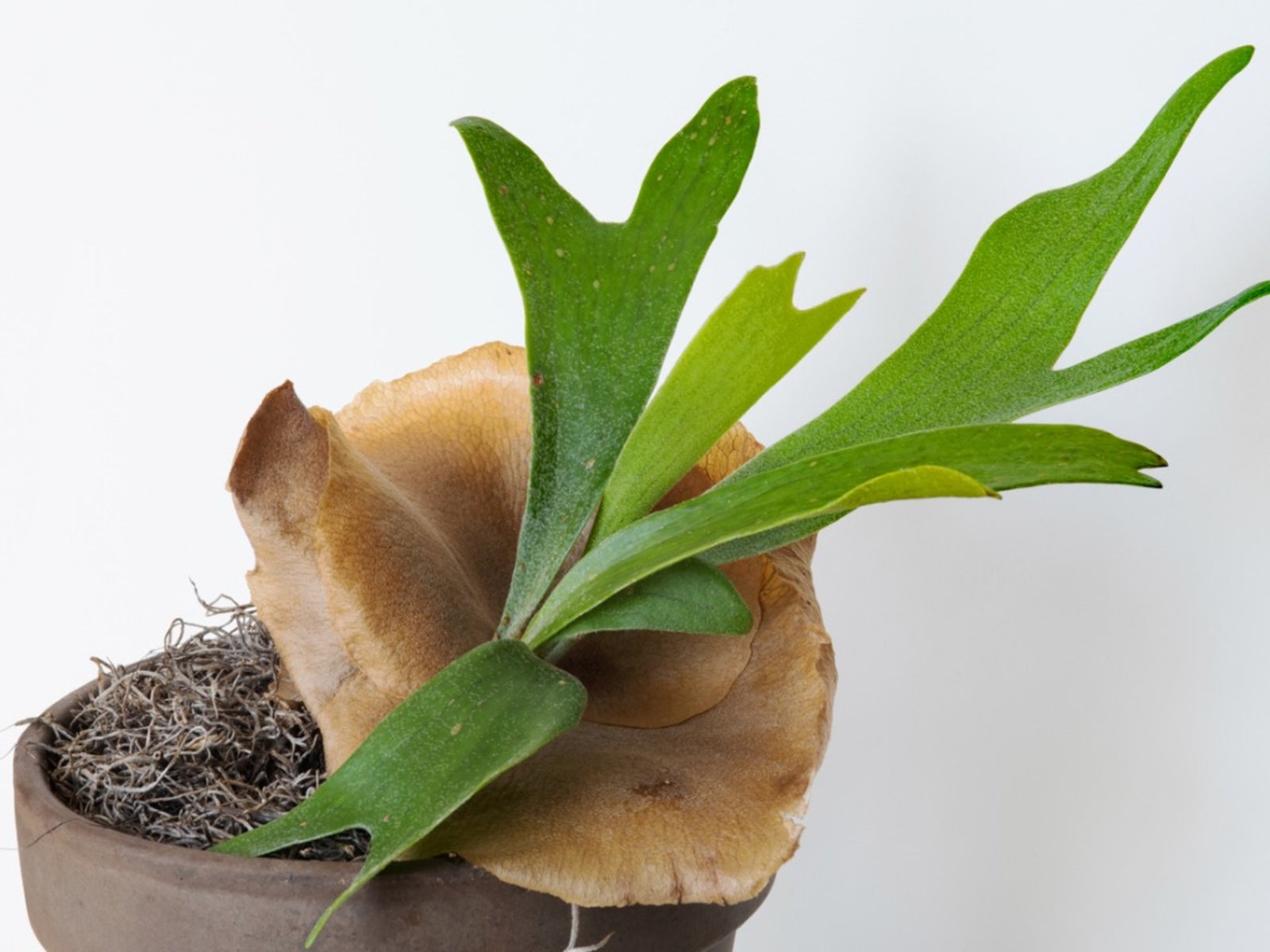Staghorn Fern Spores: Growing Staghorn Fern From Spores


Staghorn ferns (Platicerium) are fascinating epiphytic plants that in their natural environment grow harmlessly in the crooks of trees, where they take their nutrients and moisture from the rain and moist air. Staghorn ferns are native to the tropical climates of Africa, Southeast Asia, Madagascar, Indonesia, Australia, Philippines, and certain tropical areas of the United States.
Staghorn Fern Propagation
If you’re interested in staghorn fern propagation, keep in mind there are no staghorn fern seeds. Unlike most plants that propagate themselves via flowers and seeds, staghorn ferns reproduce by tiny spores that are released into the air. Propagating staghorn ferns in this matter can be a challenging but rewarding project for determined gardeners. Don’t give up, as staghorn fern propagation is a slow process that may require numerous attempts.
How to Collect Spores from Staghorn Fern
Collect staghorn fern spores when the tiny, brownish black dots are easy to scrape from the bottom side of the fronds– usually in summer. Staghorn fern spores are planted on the surface of a layer of well-drained potting media, such as a bark or coir-based compost. Some gardeners have success planting staghorn fern spores in peat pots. Either way, it’s critical that all tools, planting containers, and potting mixes are sterile. Once staghorn fern spores are planted, water the container from the bottom using filtered water. Repeat as needed to keep the potting mix lightly moist but not soaking wet. Alternatively, mist the top lightly with a spray bottle. Place the container in a sunny window and watch for staghorn fern spores to germinate, which may take as long as three to six months. Once the spores germinate, a weekly misting with a very dilute solution of a general-purpose, water-soluble fertilizer will provide necessary nutrients. When the tiny staghorn ferns have several leaves they can be transplanted to small, individual planting containers.
Do Staghorn Ferns Have Roots?
Although staghorn ferns are epiphytic air plants, they do have roots. If you have access to a mature plant, you can remove small offsets (also known as plantlets or pups), along with their root systems. According to University of Florida IFAS Extension, this is a straightforward method that involves simply wrapping the roots in damp sphagnum moss. The small root ball is then attached to a mount.
Gardening tips, videos, info and more delivered right to your inbox!
Sign up for the Gardening Know How newsletter today and receive a free copy of our e-book "How to Grow Delicious Tomatoes".

A Credentialed Garden Writer, Mary H. Dyer was with Gardening Know How in the very beginning, publishing articles as early as 2007.
-
 Looking For Plants To Give You The Soft And Fuzzies? Try These 5 Fuzzy Leaf Plant Options
Looking For Plants To Give You The Soft And Fuzzies? Try These 5 Fuzzy Leaf Plant OptionsLovers of texture, drama, silver foliage and tactile plants will adore these special sensory garden additions. These fuzzy leaf plant options will leave you all aglow
By Susan Albert
-
 Get Ready For A Summer Of Hummers! Grow These Full Sun Hummingbird Plants and Flowers
Get Ready For A Summer Of Hummers! Grow These Full Sun Hummingbird Plants and FlowersIf you’re lucky enough to enjoy a sunny backyard, make sure you are maxing out on your pollinator opportunities and grow these full sun hummingbird plants and flowers
By Tonya Barnett